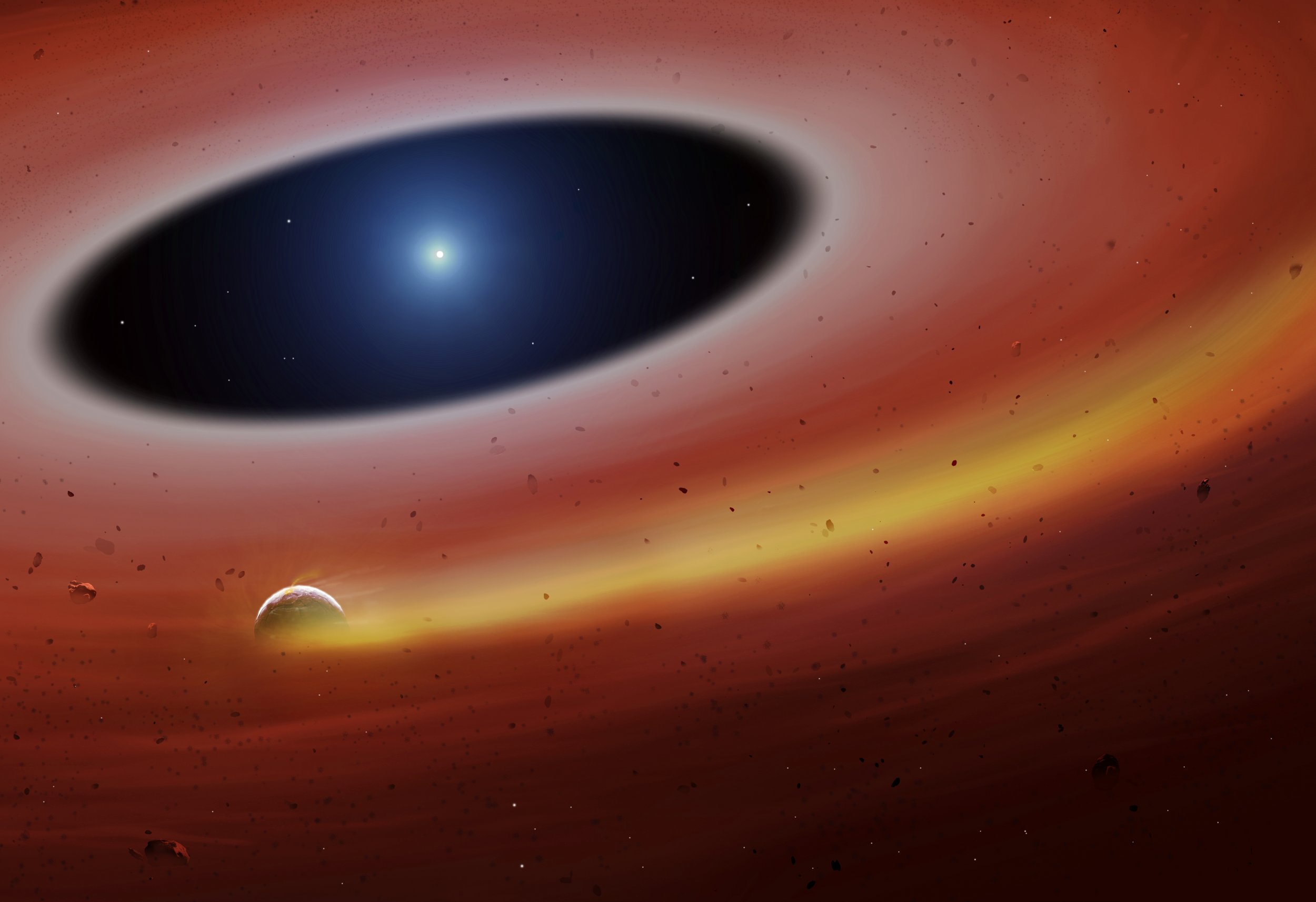
Scientists have identified a planet-like object orbiting a white dwarf star—a discovery that provides key information about what will happen when our own sun runs out of fuel and transitions into this type of celestial object.
Over recent decades, thousands of planets have been found orbiting stars beyond our solar system. Almost all of these are in systems with main-sequence stars—like our sun—that get their energy from nuclear reactions in their core. Eventually these stars run out of fuel. When this happens, they turn into red giants.
Our sun will start this process in around 5 billion years. When it happens, it will expand into the solar system, engulfing Mercury, Venus and probably Earth. Eventually, its core will collapse and it will become a white dwarf—an extremely dense, faint star about the size of a planet.
Any remaining planets orbiting a white dwarf move closer to the star and start colliding, smashing them up until they become a cloud of rocky debris.
In a study published in Science, Christopher Manser, of the U.K.'s University of Warwick, and colleagues, presented evidence of a small, intact planetary body orbiting the white dwarf SDSS J122859.93+104032.9.
"The gaseous planetary disc around this white dwarf was the first discovered, and is currently still the brightest disc known, making it great for observations," Manser told Newsweek. "The observations were taken as a pilot test to see if we could detect anything happening on the time it takes material to orbit the white dwarf (roughly hours)."
To their surprise, the team found a planetesimal—a solid object formed through colliding rocks that clump together. They say the object must be around 370 miles in diameter and extremely dense. If it is not, it would be torn apart by the gravitational forces from the white dwarf. They suggest the planetesimal could be the core of one of the solar system's planets—the outer layers having been stripped away.
"To survive so close to the white dwarf, the body either has to have a large density, or a high internal strength to avoid being ripped apart," Manser said. "Currently, we cannot distinguish between the two, only that it requires some minimal amount of internal strength and a density around that of iron—if the internal strength is greater, our density estimate can be reduced."
The discovery allows scientists to have a glimpse into the future of our own solar system. While the inner three planets will be destroyed, the remainder will survive. "By studying systems like SDSSJ122859.93+104032.9, we can learn more about the future of the solar system, and the majority of all known exoplanetary systems, which orbit stars that will themselves eventually become white dwarfs," Manser said, adding that they now plan to hunt down more planetesimals orbiting white dwarfs.
Jay Farihi, a professor in University College London's physics and astronomy department, who was not involved in the study, said the planetesimal was similar to a "ring moon"—an object orbiting in the disc of rock and dust surrounding the star, a bit like how objects persist in Saturn's rings.
"This likely means the disks or rings around white dwarfs are highly dynamical and changing environments that will continue to do interesting things and elucidate more exoplanetary science," he said. "Continued monitoring of these real-time events should give insight into the total masses of the rings, the planetary parent bodies that were disrupted or otherwise destroyed to create the dust and gas, and most of all how they compare to Earth and the terrestrial planets."
Uncommon Knowledge
Newsweek is committed to challenging conventional wisdom and finding connections in the search for common ground.
Newsweek is committed to challenging conventional wisdom and finding connections in the search for common ground.
About the writer
Hannah Osborne is Nesweek's Science Editor, based in London, UK. Hannah joined Newsweek in 2017 from IBTimes UK. She is ... Read more
To read how Newsweek uses AI as a newsroom tool, Click here.








